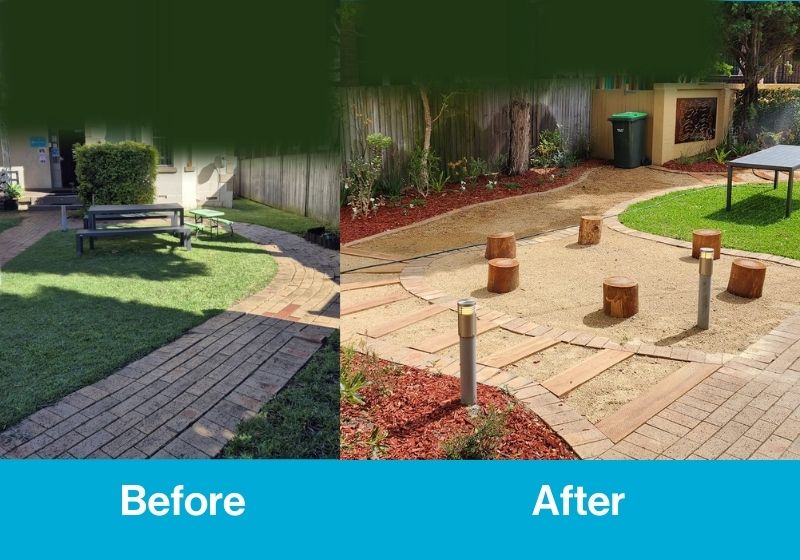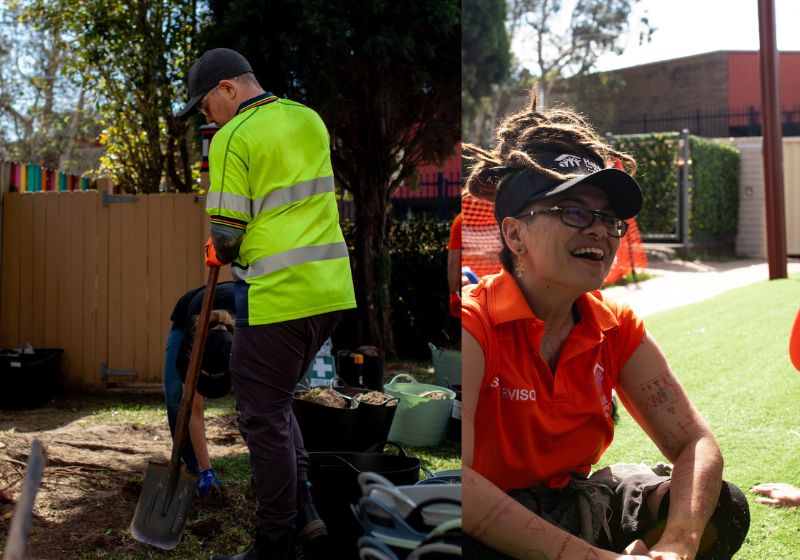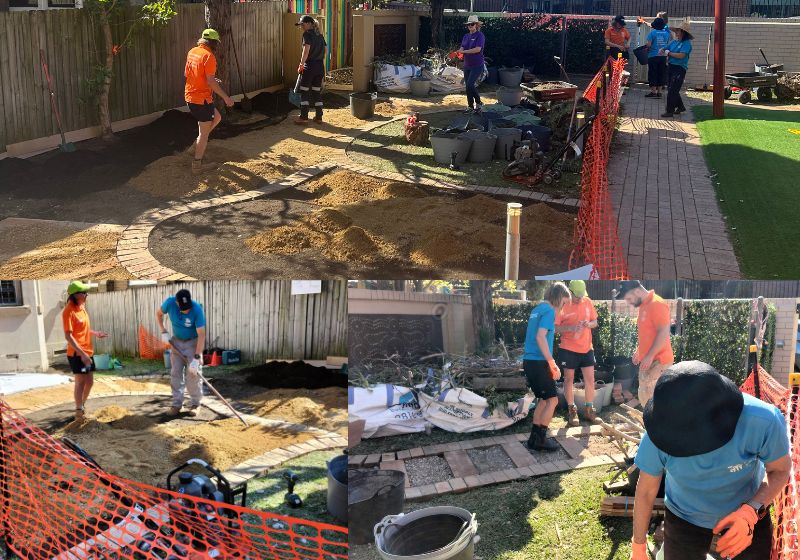Our Brush with Kindness volunteers and our Habitat Women cohort came together to create a sensory garden at the Aboriginal Women and Children’s Services (AWCCS) refuge. This refuge provides a safe haven for Aboriginal women and children escaping domestic violence, offering a place of healing and renewal.
The sensory garden project was born out of a shared commitment to creating positive environments that can foster healing and support personal growth. For children who have endured trauma, especially those impacted by domestic violence, engaging with nature and experiencing multi-sensory play can be a powerful tool for emotional recovery. The sensory garden is now a vibrant space, designed to give children a peaceful yet stimulating environment where they can learn, play, and begin the journey of healing.
How Sensory Gardens Support Women and Children Who Experienced Domestic Violence
Sensory gardens offer more than just a beautiful setting; they provide essential therapeutic benefits. For children who have experienced trauma, these spaces encourage exploration, play, and interaction with nature in a safe, nurturing environment. Sensory gardens stimulate sight, sound, smell, touch, and taste, helping children develop sensory awareness and regulation. In these moments of interaction, children can feel grounded and at ease, enabling them to process difficult emotions and experiences more safely.

Gardening and playing in nature have been shown to reduce stress, improve focus, and increase positive mood—all critical factors in helping children who have faced traumatic experiences rebuild their self-esteem and sense of safety. In the context of domestic violence recovery, sensory gardens offer a space where children can momentarily disconnect from painful memories and focus on growth, both literally and metaphorically.
Kim Foley from AWCCS highlighted the significance of this new space: “Habitat has come on site to build a sensory garden as part of the healing process for the women and children who come here to seek refuge.” The sensory garden project doesn’t just benefit the children; it provides a therapeutic outlet for the women as well, offering a calming environment where they can spend time with their children and begin to rebuild their lives.
Empowerment Through Habitat Women
The Habitat Women cohort played a key role in bringing this project to life. For many of the Habitat Women this project was an opportunity put their new skills to use but also a chance to give back. The experience of coming together and building something meaningful provides a powerful sense of achievement for the participants.

Elizabeth (Habitat Women Supervisor) shared, “I came into the space in a difficult place, and the support of everyone and the encouragement and learning new skills—it made me feel empowered in a very real way.” For some, the journey has come full circle, from attending the course to now supervising others, as one Habitat Women alumna proudly stated, “Empowerment is a word I’d heard a lot before, and I never really felt it until I did the course. I walked out feeling really empowered, and now I’m here supervising! So it’s really come full circle, and I’m really proud and also really grateful.”
A New Beginning for the Women and Children at the AWCCS
The sensory garden project is a testament to what can be achieved through community collaboration and volunteer dedication. As children play and explore the new garden, they are given a space where joy and healing can flourish together.

The AWCCS refuge, now with a sensory garden, continues its mission to create spaces that allow families to rebuild their lives and, through the garden, to start that journey in an environment of peace, colour, and hope. This garden is more than just a project—it’s a step toward healing for many families impacted by domestic violence, and it reflects the heart of Habitat for Humanity Australia’s mission to build homes, communities, and hope.
Thank You to our Partners
We would like to thank the following organisations and partners who made this project possible:
-Stantec for making this project possible.
-Cola Designs for providing the design.
-Bob and Ben the woodmen for the posts.
-Wanless Skips are for ease of access to waste.
-ANL for the building material.
-Indigrow for the plants.
If you’re interested in supporting future projects like this one, reach out to Habitat for Humanity Australia to learn more about volunteer opportunities and how you can make a difference. Visit: https://helpinghands.online/


